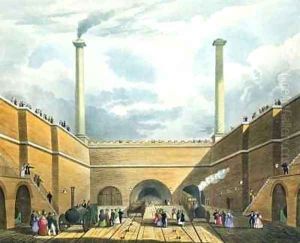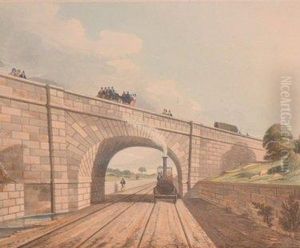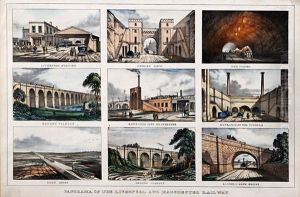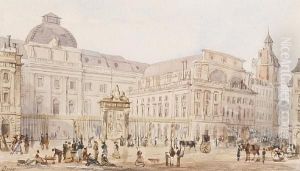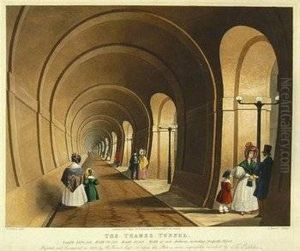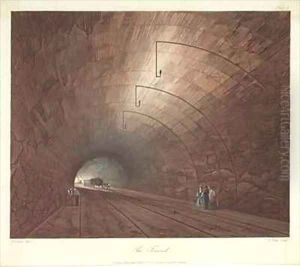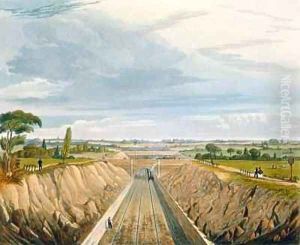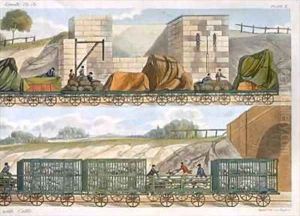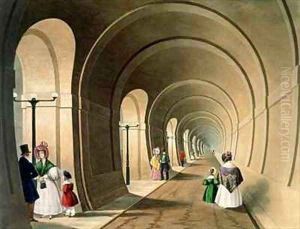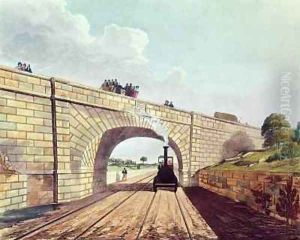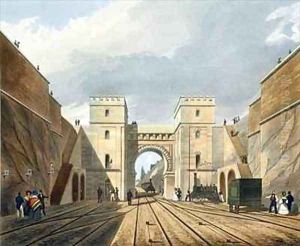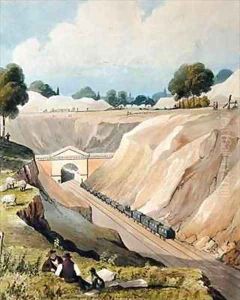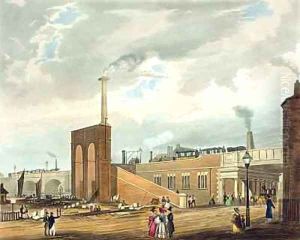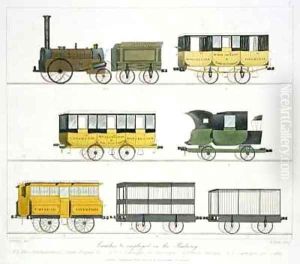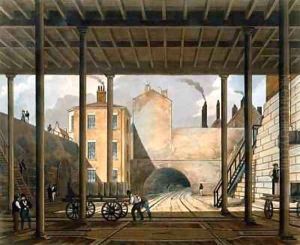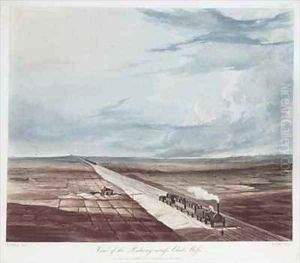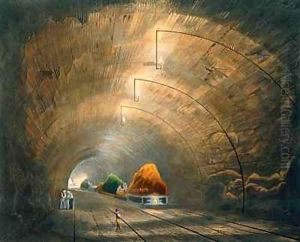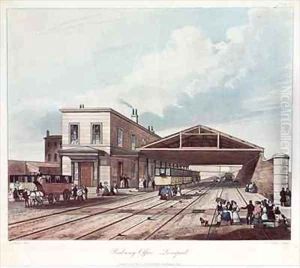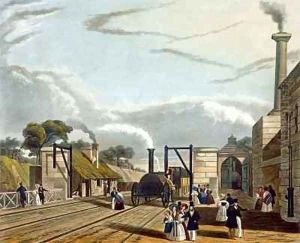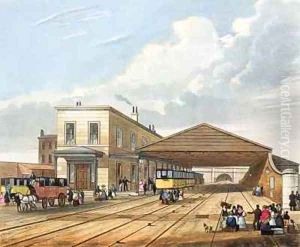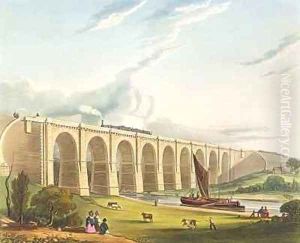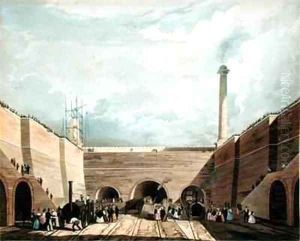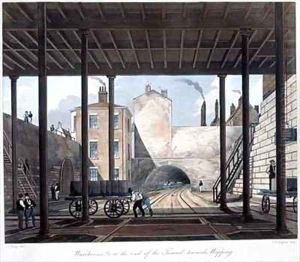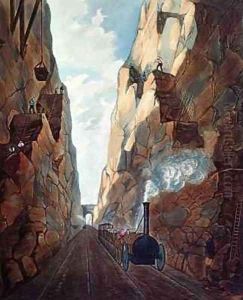Thomas Talbot Bury Paintings
Thomas Talbot Bury was an English artist and architectural draughtsman, born in 1809. He gained prominence for his works on architectural subjects and was closely associated with the early 19th century Gothic Revival movement. Bury is particularly remembered for his detailed lithographs of contemporary buildings.
Bury began his artistic career under the tutelage of Augustus Charles Pugin, the father of the more famous Augustus Welby Northmore Pugin, who was a leading figure in the Gothic Revival. Under the elder Pugin's guidance, Bury developed a keen eye for architectural detail and honed his skills in drawing and lithography.
He is perhaps best known for his series of lithographs titled 'Coloured Views on the Liverpool and Manchester Railway', published in 1831. These prints were among the earliest representations of the Industrial Revolution and are considered valuable records of the history of the railway. They depict the novel and impressive structures associated with the railway, including bridges, viaducts, and stations, capturing the engineering marvels of the era.
Beyond his work on railways, Thomas Talbot Bury also produced drawings and lithographs of architectural works, including a series on the Antiquities of Normandy. He contributed illustrations to books on architecture, further cementing his reputation as an accomplished draughtsman.
Despite his contributions to architectural art, Bury did not achieve the same level of fame as the Pugins. Nevertheless, his works are appreciated for their historical value and technical skill. They provide insight into the architectural and engineering feats of the 19th century as well as the aesthetic preferences of the Gothic Revival period.
Bury's career also included teaching, and he was involved in various professional societies that promoted the arts. His legacy lives on through his works, which continue to be studied and admired by those interested in the history of art, architecture, and engineering. Thomas Talbot Bury passed away in 1877, leaving behind a body of work that remains significant to the study of Victorian England and the early industrial age.
